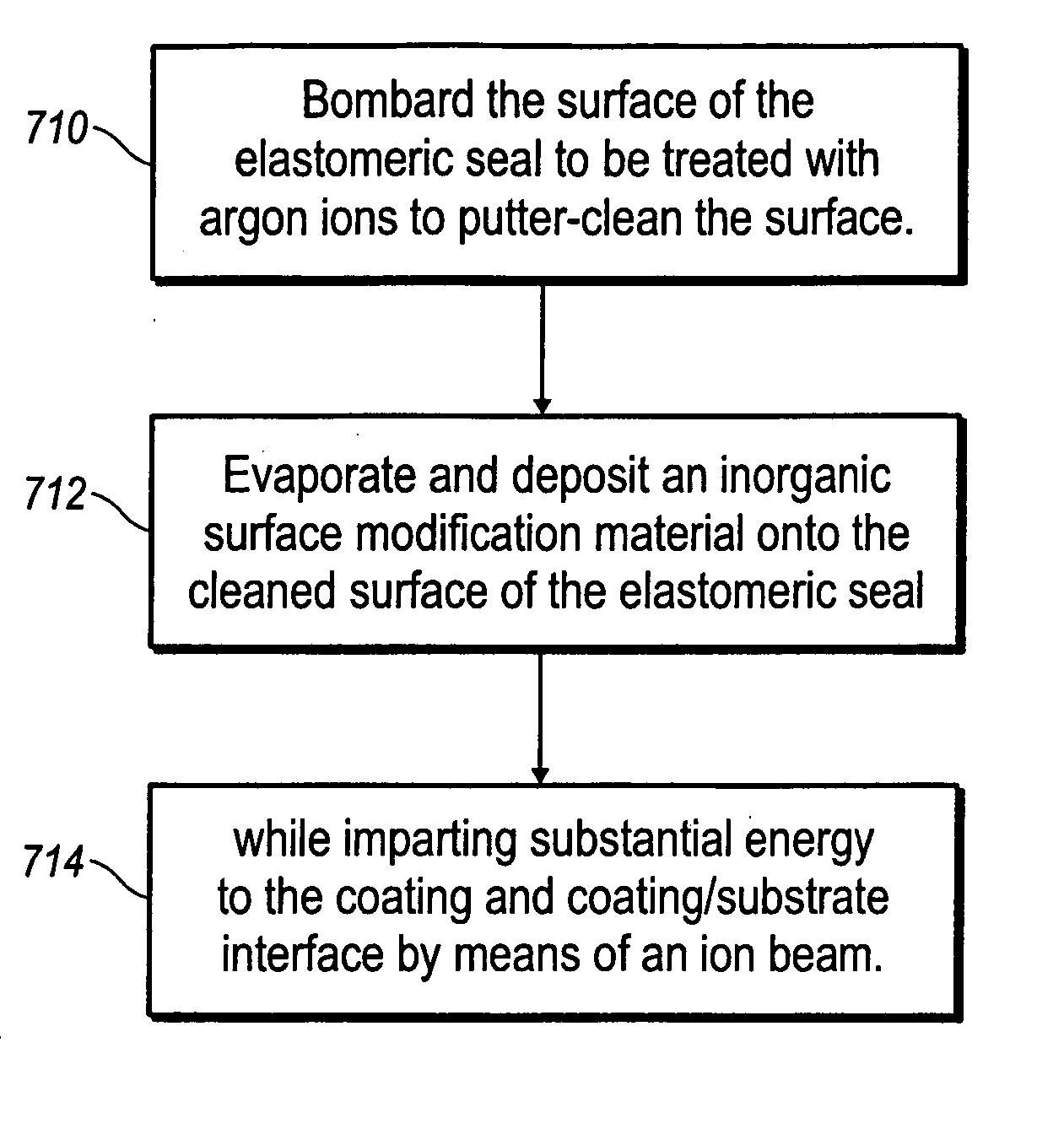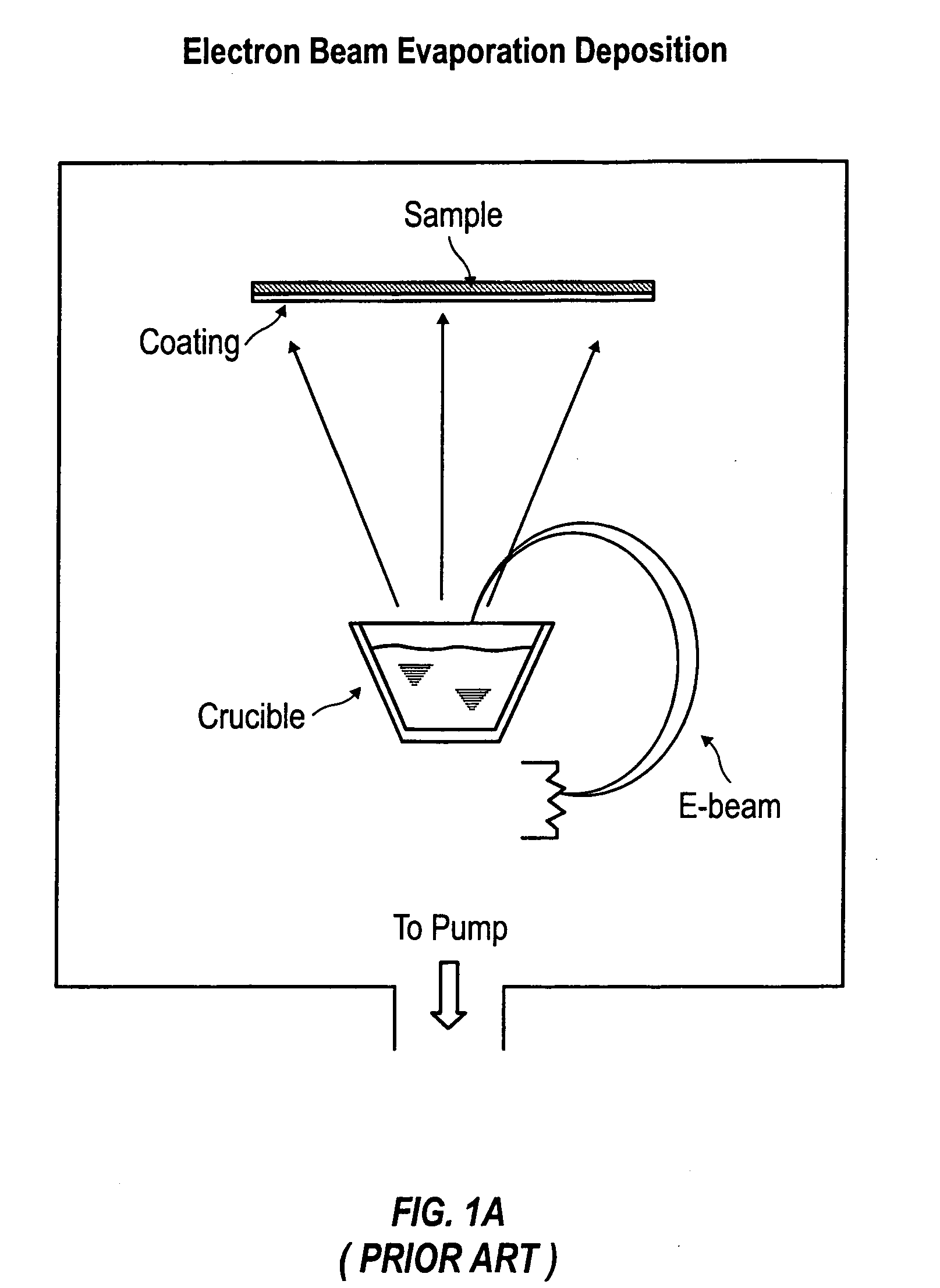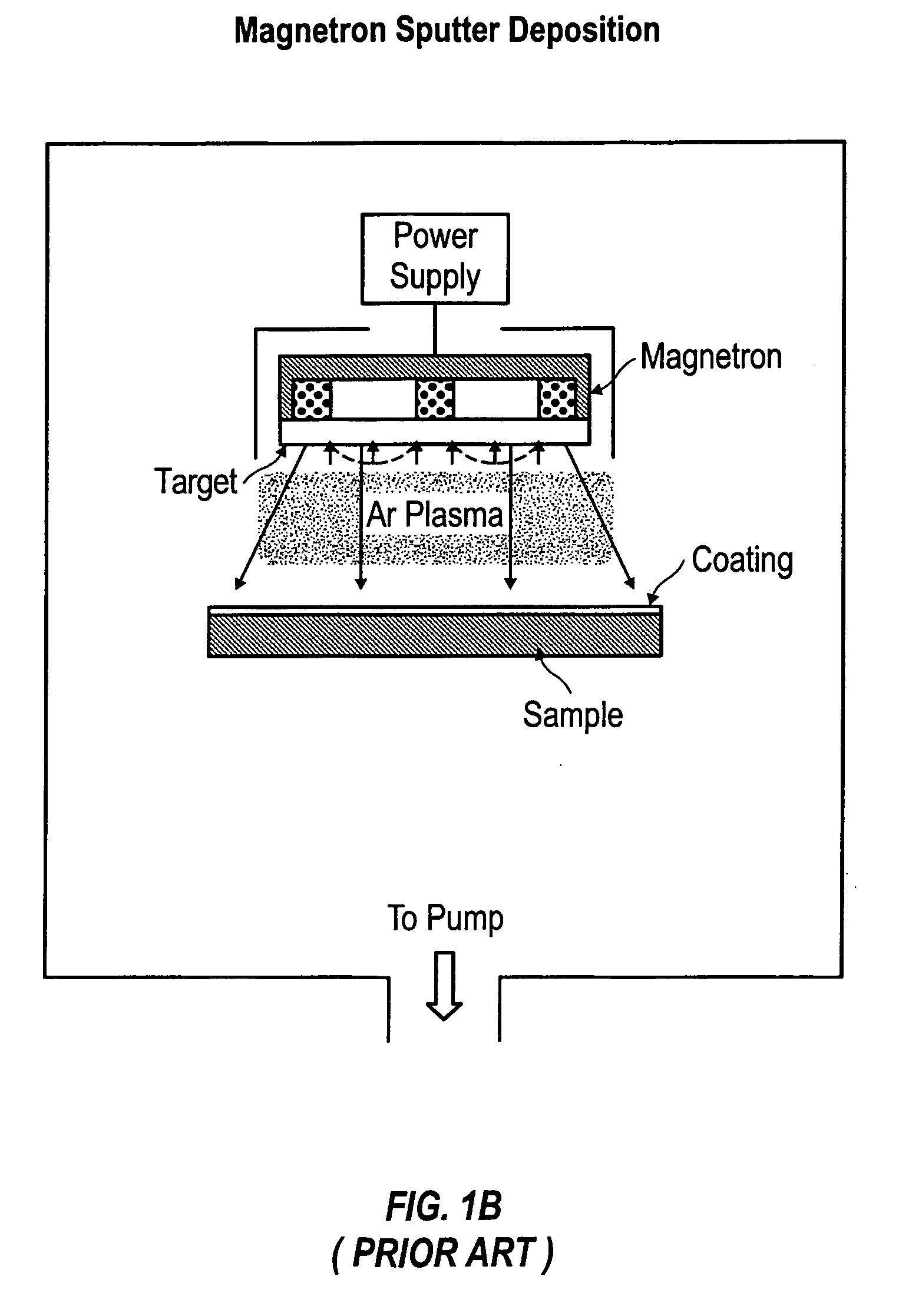Ion-beam assisted deposition of inorganic coatings for elastomeric seal wear resistance improvement
- Summary
- Abstract
- Description
- Claims
- Application Information
AI Technical Summary
Benefits of technology
Problems solved by technology
Method used
Image
Examples
Embodiment Construction
[0039] The numerous innovative teachings of the present application will be described with particular reference to the presently preferred embodiment (by way of example, and not of limitation).
[0040] The present inventors have discovered a new way to improve the wear resistance of seals used in drill bits, and thereby greatly extend bit lifetime.
[0041] As illustrated in FIG. 7, in one example embodiment, the elastomeric seals of the present application are initially bombarded with argon ions to putter-clean the surface (step 710). An inorganic surface modification material, such as a metallic or ceramic material, is then evaporated and deposited onto the surface of the elastomeric seals (step 712) while an ion beam imparts substantial energy to the coating and coating / substrate interface (step 714). The inorganic material can be any metal, such as nickel or chromium. The inorganic material can also be any ceramic, including but not limited to chromium nitride or titanium carbide. ...
PUM
| Property | Measurement | Unit |
|---|---|---|
| Wear resistance | aaaaa | aaaaa |
| Surface composition | aaaaa | aaaaa |
Abstract
Description
Claims
Application Information
 Login to View More
Login to View More - R&D
- Intellectual Property
- Life Sciences
- Materials
- Tech Scout
- Unparalleled Data Quality
- Higher Quality Content
- 60% Fewer Hallucinations
Browse by: Latest US Patents, China's latest patents, Technical Efficacy Thesaurus, Application Domain, Technology Topic, Popular Technical Reports.
© 2025 PatSnap. All rights reserved.Legal|Privacy policy|Modern Slavery Act Transparency Statement|Sitemap|About US| Contact US: help@patsnap.com



